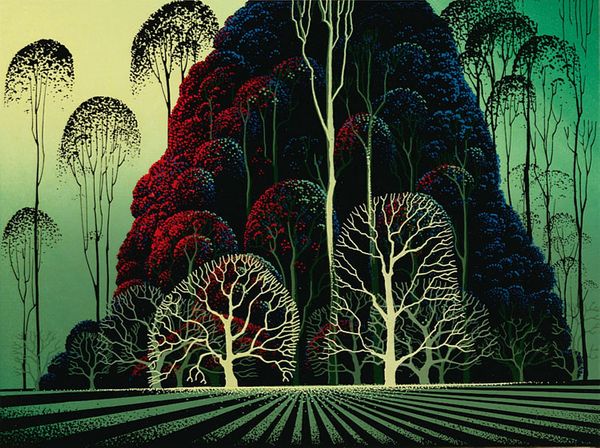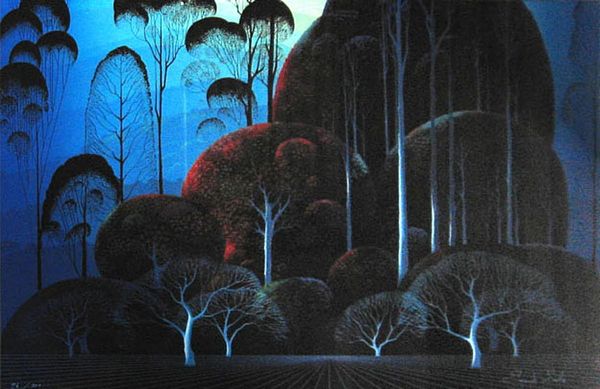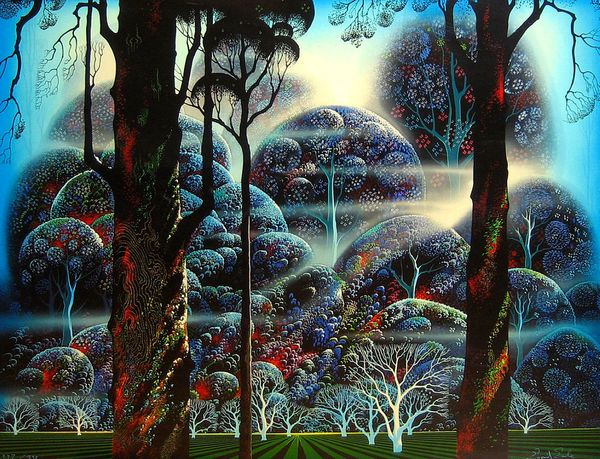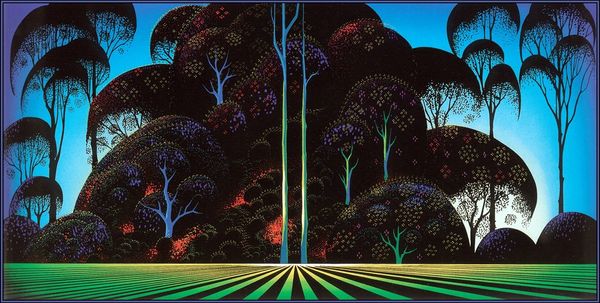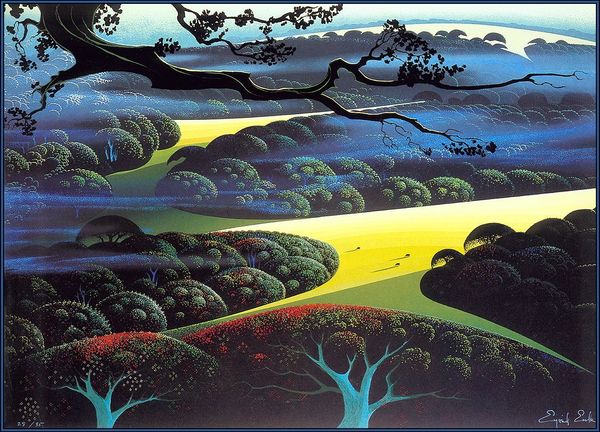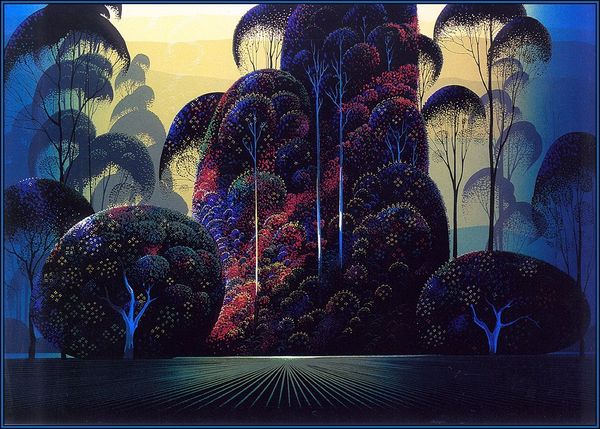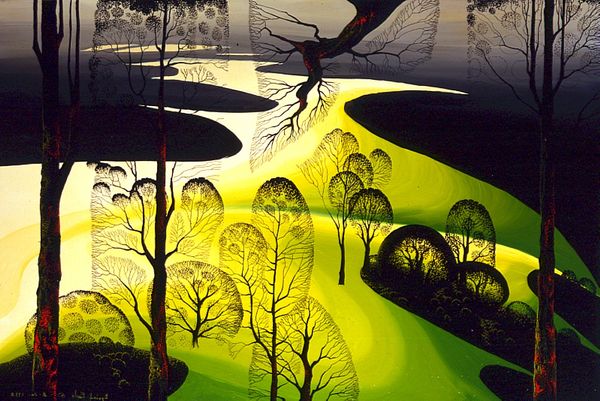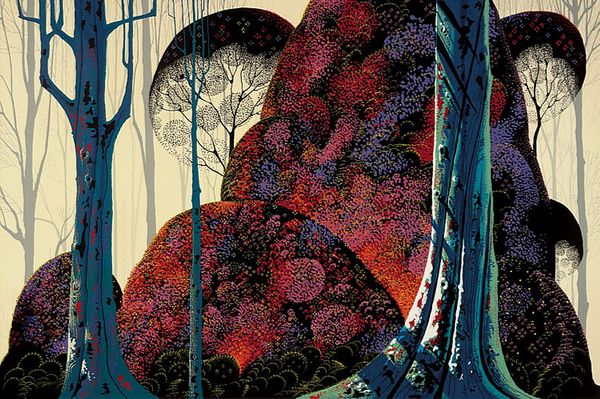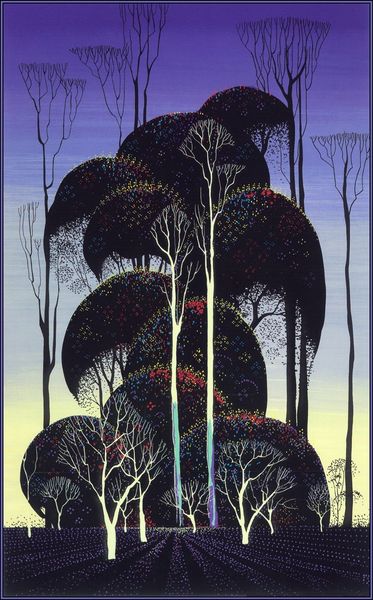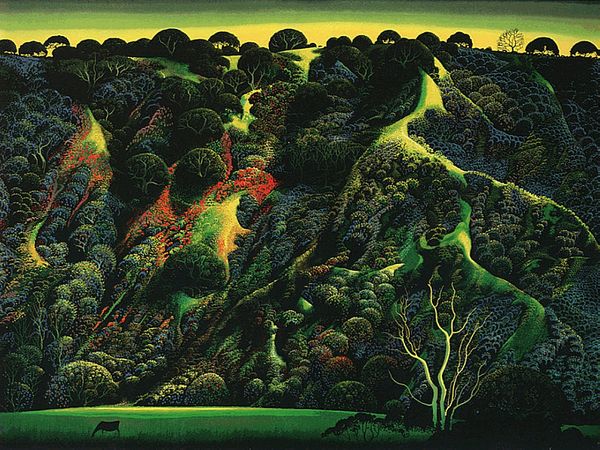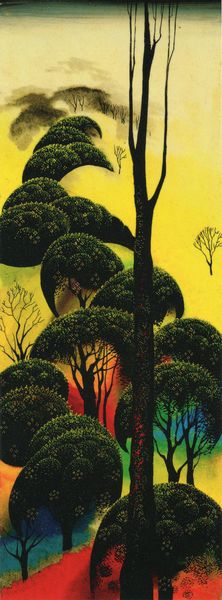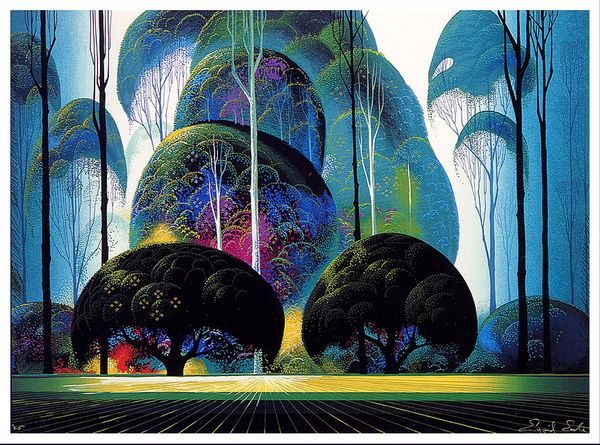
Copyright: Eyvind Earle,Fair Use
Curator: Standing before us is Eyvind Earle's "California Orchid" from 1983, a mixed-media work, primarily oil paint, that offers a striking, almost dreamlike vision of nature. What's your initial take? Editor: My first thought? This feels like a theatrical backdrop! All that densely packed foliage, and those stark, skeletal trees in the front. The craftsmanship itself—the deliberate, layered texture—it’s vying for attention. It is trying to pull me in. Curator: Exactly! Earle was a master of creating these worlds within worlds. The texture is achieved through painstaking layering, tiny brushstrokes that almost give it a pointillist feel but much more structured. You sense the intense labor, a real commitment of time and effort. Editor: Labor, yes! All I see is layers of color to compose the final product. These aren’t just pretty trees, they’re objects shaped by someone’s hand. It makes me think about wallpaper design and patterns, or the industrial-scale prints you find on textiles. Is he elevating these functional, everyday crafts? Curator: I think it's more like Earle using a hyper-controlled approach to achieve a sense of the sublime. He creates an almost unnatural symmetry and harmony, pushing us towards a heightened state of awe rather than aiming for the practical uses in the market. Editor: Maybe so, but there's a seductive artificiality here too, right? The way the light hits some sections so precisely. Everything is so neat and trimmed; the landscape becomes… stylized. And all this detail work—was this commercially viable? Or more to the point, how did it impact his economic access and market opportunities? Curator: That's a valid point, but it speaks more to his artistic obsession, a sort of "handmade perfection," perhaps at odds with industrial productivity but ultimately driven by a deeper desire to capture the spiritual essence of a place, transforming observed nature through art. Editor: And a very California dream it is, I imagine. Looking at how landscape can reflect society and material, his composition hints at land management practices of idealized forms. Curator: Well, pondering Earle's meticulous vision in "California Orchid" certainly challenges our ideas about art, skill, and the emotional experiences attached to familiar landscapes. Editor: Absolutely! Looking past the surface, past even the artist's intent, the labor and economic viability question are so pertinent to considering what becomes art and how. A great painting raises the questions of why these forms rather than another.
Comments
No comments
Be the first to comment and join the conversation on the ultimate creative platform.
